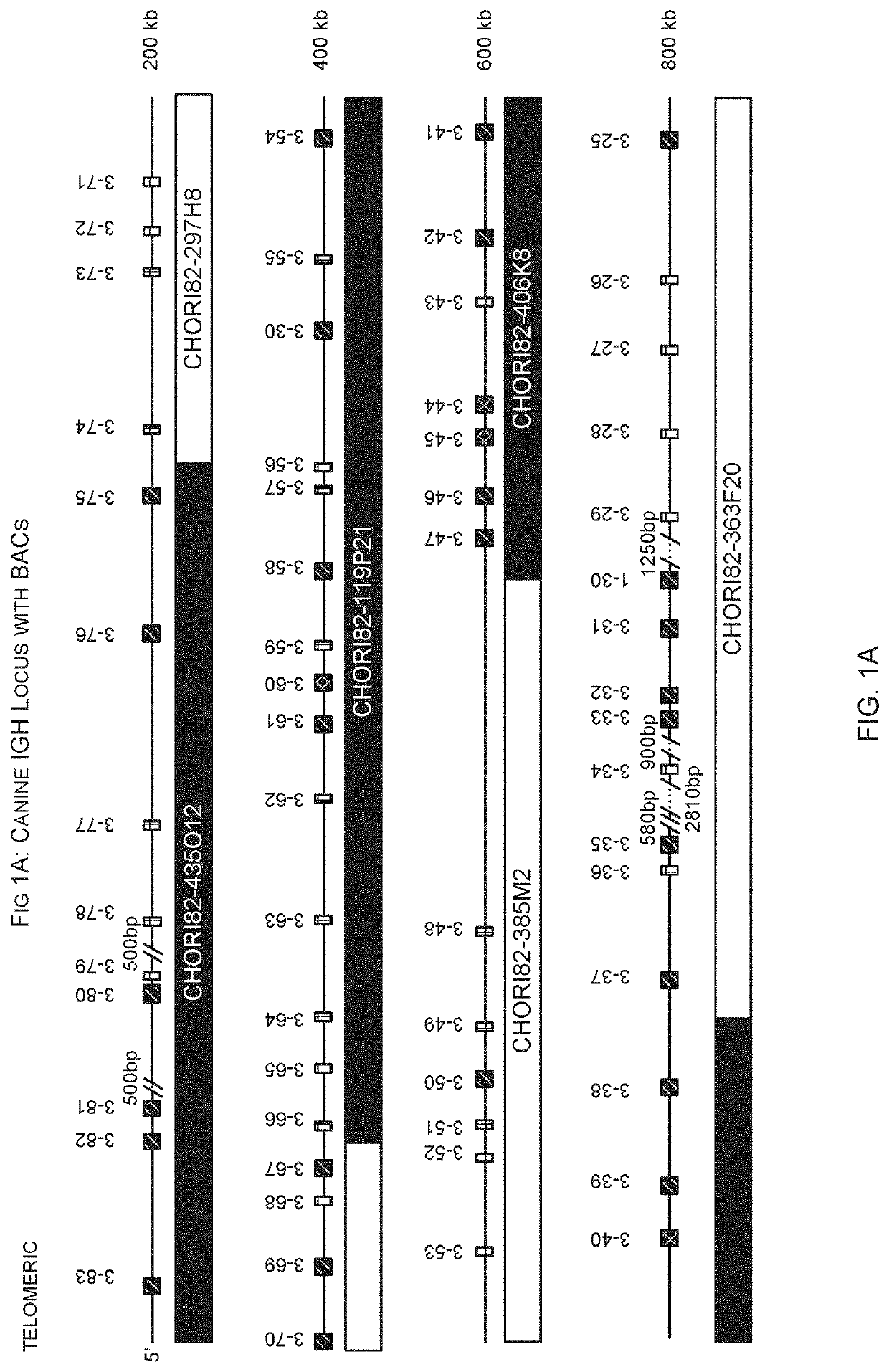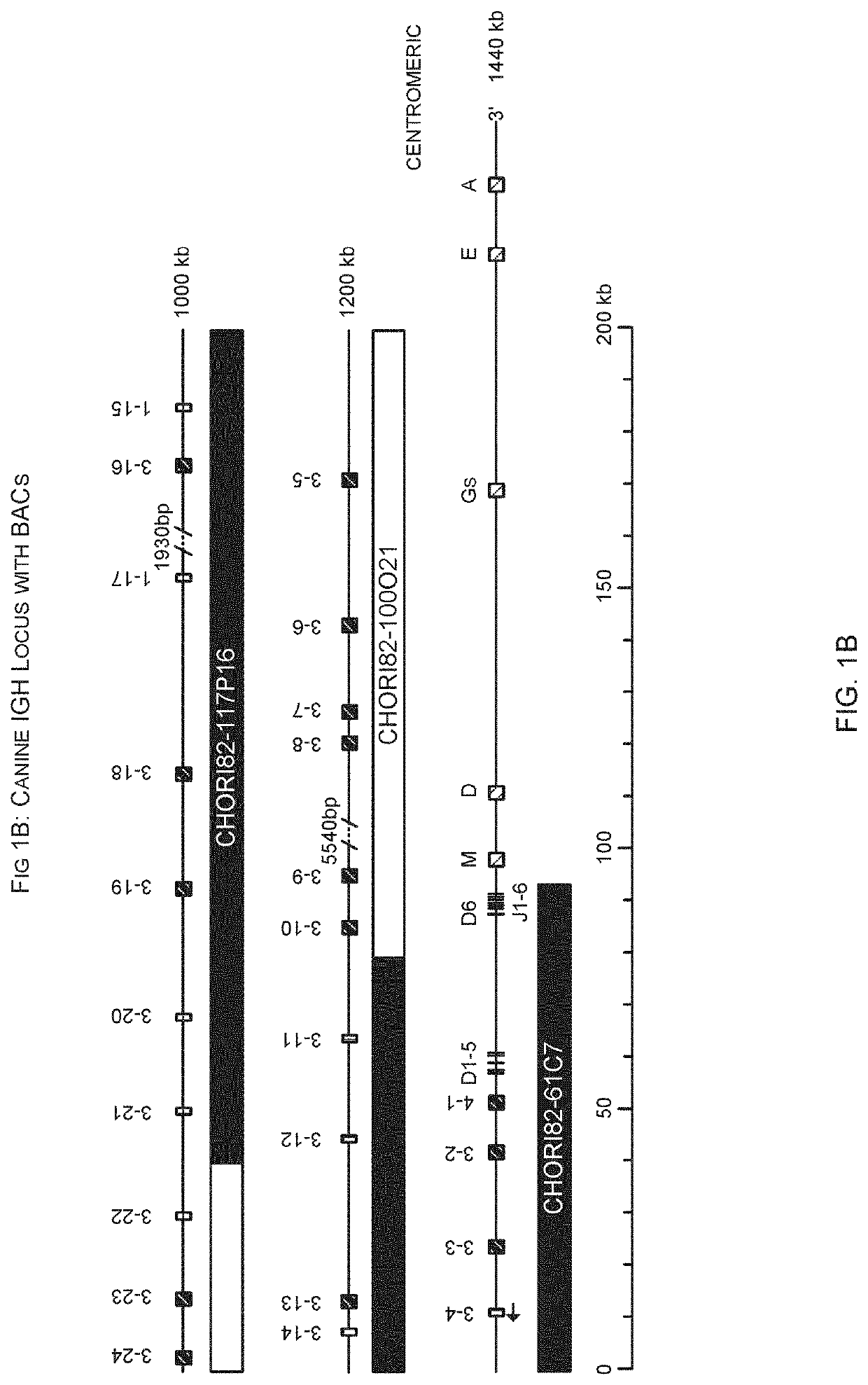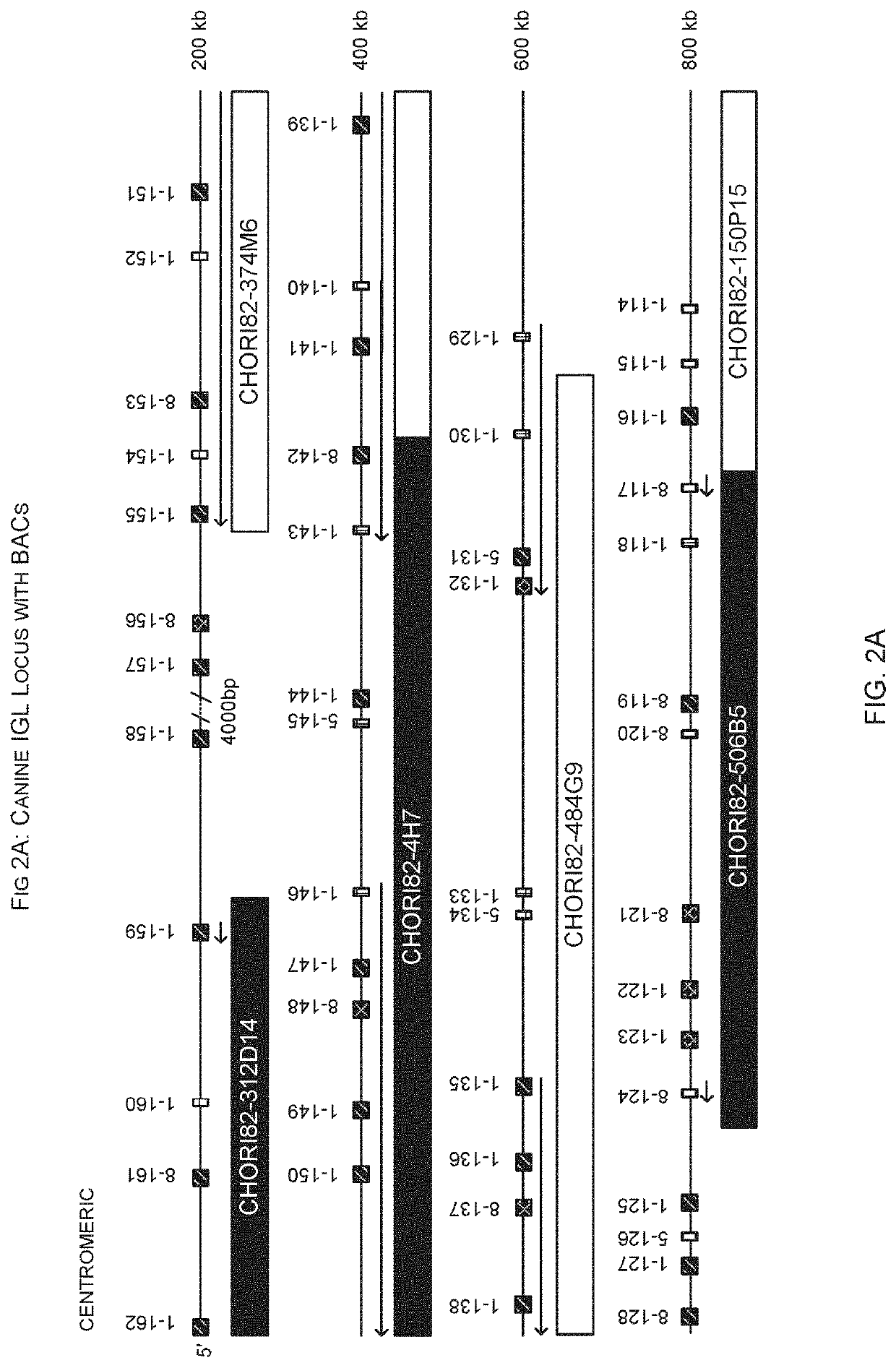Animal models and therapeutic molecules
- Summary
- Abstract
- Description
- Claims
- Application Information
AI Technical Summary
Benefits of technology
Problems solved by technology
Method used
Image
Examples
example 1
n of the Canine IG Loci
[0298]Dogs are an excellent model for human disease, for example the treatment of canine lymphoma is often predictive of the human response to that treatment. However, an incomplete picture of their antigen-receptor (AR) gene loci has restricted their use. This work advances the annotation of the canine AR loci, develops methods to interrogate their evolutionary pressures, and looks into breed-specific features of the loci. A bioinformatic approach alongside unbiased RNA-seq was used to complete the annotation of the canine AR genes, and these sequences were used to query 107 whole genome sequences from 19 breeds. A combination of existing and novel methods were used to analyse diversity and mutation rates across these genes. >5,500 novel alleles were identified across the ˜550 gene segments (of which 326 were newly annotated) of the AR loci, yielding insight into AR evolution as well as confirming the greater conservation between dog and human than mouse with...
example 2
ion of Chimaeric IG Loci in Murine Cells
[0350]The IG loci of murine ES cells were modified by BAC insertion, to introduce canine heavy chain DNA into the murine IGH locus and canine light chain immunoglobulin DNA into the murine IGL kappa and lambda loci, as follows:
Canine IGH Insertion
[0351]Insertion of canine DNA from chromosome 8 was made into the mouse IGH locus by BAC insertion. The inserted DNA comprised nucleotides 72,988,807-73,128,041 and contains IGHV4-1 to IGHV3-4, as well as IGHD1-6 and IGHJ1-6. See FIGS. 1 and 10.
Canine IGL Lambda DNA Insertion
[0352]Insertion of canine DNA from chromosome 26 was made into the mouse IGL lambda locus on chromosome 16. The inserted DNA comprised nucleotides 27,509,860-27,646,373 and contains IGLV3-1 to IGLV4-6 as well as IGLJ1-9 and IGLC1-9. See FIGS. 2 and 13.
[0353]Co-ordinates are from the December 2011 GRCm38 / mm10 assembly for the mouse and from Canfam3.1 for the dog.
[0354]Insertions of canine DNA were inserted into a landing pad locate...
example 3
[0370]FIGS. 4, 5 and 6 show the annotation of the cat Ig loci. The method of annotation was the same as was outlined in 2.1.1 in Example 1, except that the cat genome was interrogated in place of the canine genome and no RNA-Seq data was used.
[0371]The annotation provides tools and information that allows for the use of cat DNA in the rodent genome, using methods as described above.
PUM
 Login to View More
Login to View More Abstract
Description
Claims
Application Information
 Login to View More
Login to View More - R&D
- Intellectual Property
- Life Sciences
- Materials
- Tech Scout
- Unparalleled Data Quality
- Higher Quality Content
- 60% Fewer Hallucinations
Browse by: Latest US Patents, China's latest patents, Technical Efficacy Thesaurus, Application Domain, Technology Topic, Popular Technical Reports.
© 2025 PatSnap. All rights reserved.Legal|Privacy policy|Modern Slavery Act Transparency Statement|Sitemap|About US| Contact US: help@patsnap.com



